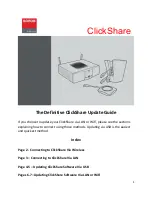
1) Basic connection
The equipment must be powered from an LPS in accordance with EN60950-1 : 2001
2) When two or more sets are connected to
the same line.
3) When two or more sets are connected
to separate lines.
}
}
}
}
}
}
}
Wiring
4) Wiring distance
Terminal arrangement
Size of wire used
Power voltage
12V DC
24V DC
Max. wiring distance, when two or
more sets are connected, is the above
value divided by the number of sets.
The signal line can be wired to a
distance of up to 6,000ft. (2,000m)
with AWG 20 (dia.0.8mm) telephone
wire.
1) Supply power with covers off.
2) Look through the view finder on the transmitter unit and move it
until the receiver unit is visible.
Repeat the procedure on the receiver unit.
3) Set the adjustment mode switch on the receiver to "adjustment mode".
Connect the digital volt meter to the monitor jack and check the
monitor output voltage (beam reception level).
When the output voltage is low, adjust the installation height of the
transmitter and receiver so that the output voltage will reach the
highest level. (Make sure that the angle of the antenna does not
change.)
4) After adjustment, make sure that the adjustment switch is set to
"Operation mode".
N.C.
N.O.
COM.
①
②
③
④
⑤
⑥
⑦
①
②
⑥
⑦
7
5
OPERATION CHECK
WIRING
6
SET-UP OF FUNCTIONS AND
BEAM ALIGNMENT
After adjustment, set the adjustment mode switch to "Operation mode".
Install the sensor at a proper height and position otherwise
detection area could be widened over 6.6' (2m).
This could cause the sensor to detect movements of cars or
vegetations near the area and lead to frequent false alarms.
AWG 20 (Dia. 0.8mm)
AWG 18 (Dia. 1.0mm)
AWG 17 (Dia. 1.1mm)
AWG 16 (Dia. 1.25mm)
AWG 15 (Dia. 1.4mm)
AWG 14 (Dia. 1.6mm)
Up to 660ft. (200m)
Up to 1,000ft. (300m)
Up to 1,350ft. (400m)
Up to 1,800ft. (550m)
Up to 2,300ft. (700m)
Up to 2,950ft. (900m)
Up to 5,300ft. (1,600m)
Up to 7,800ft. (2,400m)
Up to 9,500ft. (2,900m)
Up to 12,500ft. (3,800m)
Up to 17,000ft. (5,100m)
Up to 21,000ft. (6,400m)
TR
TR
TR
TR
TR
RE
RE
RE
RE
RE
Power
(
DC12V
)
Power
(
DC12V
)
Power
(
DC12V
)
Alarm
signal
(
N.C.
)
(
N.C.
)
Alarm
signal
Alarm signal
1
(
N.C.
)
Alarm signal
2
(
N.C.
)
(
Control panel
)
(
Control panel
)
(
Control panel
)
Note : 1)
2)
[Transmitter]
[Receiver]
Tamper output
Dry contact relay output N.C.
30V (AC/DC) 0.1A
Tamper output
Dry contact relay output N.C.
30V (AC/DC) 0.1A
Alarm output
Dry contact relay Form C
30V (AC/DC) 0.25A
Power
12 to 28V DC
(non-polarity)
Power
12 to 28V DC
(non-polarity)
Voltage reading
2.1V or more
1.8V to 2.1V
1.8V or less
Sensitivity
Best
Good
Poor, re-adjust
① ② ③ ④
① ②
①②③④ ①②③④
①②
①②
①②③④ ①②③④
①②
①②
Vertical angle
adjustment screw
Adjustment dial
Digital voltmeter
Antenna
Note:
2) Check by both the alarm LED and control panel
1) Check by alarm LED only.
After the installation and angle adjustment are
finished, test operation by performing a walking
test throug walk testing the sensor.
Two methods may be used.
When cover is attached, the sensor is switched
to be in an operation mode automatically.
Note:
RE
TR
Light
Control panel
RE
TR
Light






















